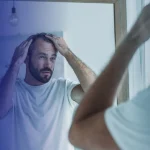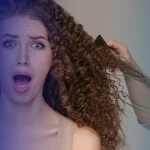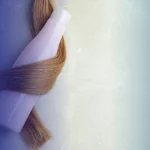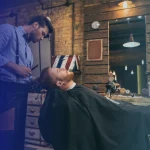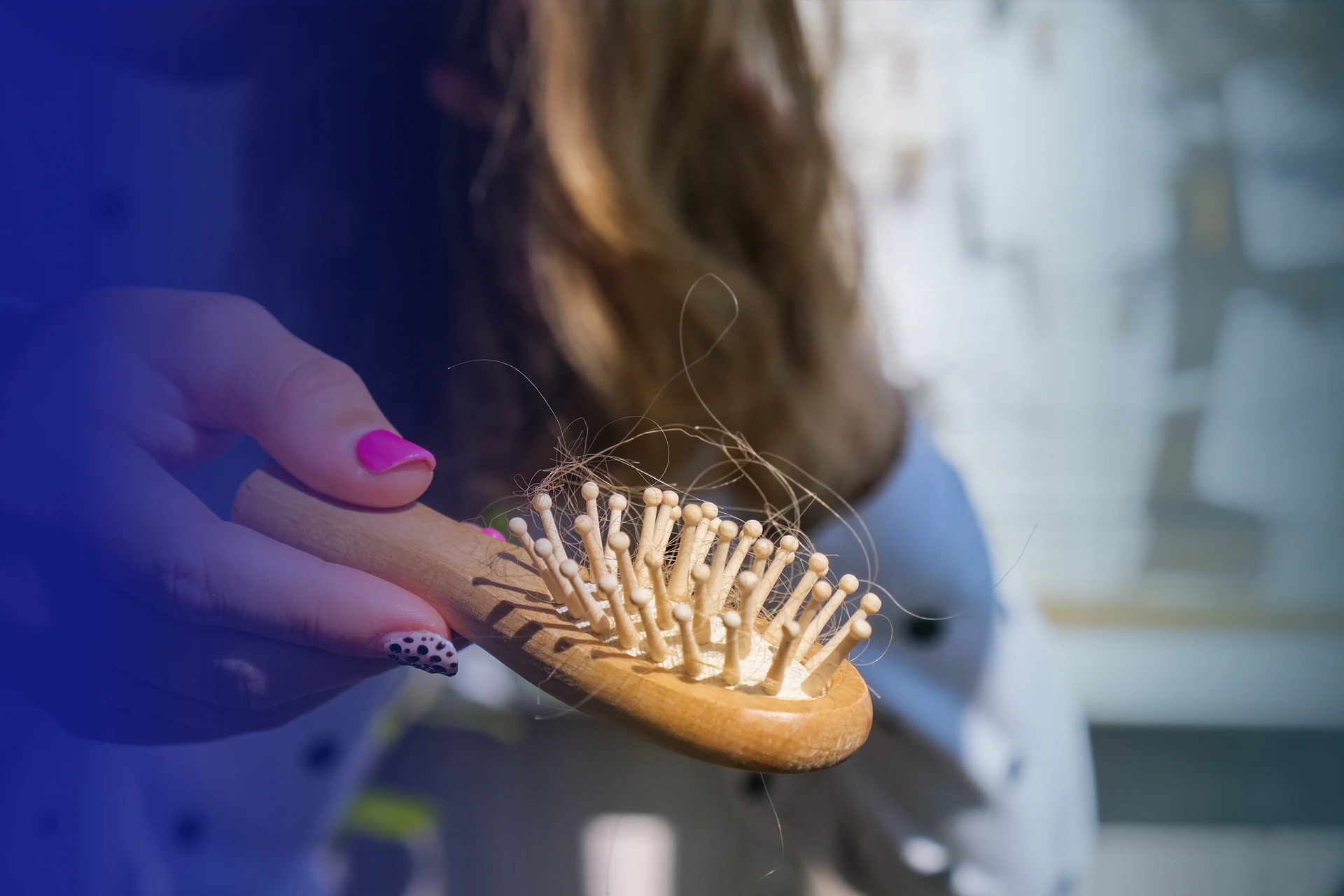
Table Of Content
Hair loss can affect anyone, regardless of gender. While it is common to talk about men losing their hair, it can be harder for women experiencing female pattern baldness to open up about their condition. Many women see their hair as a large part of their appearance and self-identity, and it can be difficult to face up to the prospect of losing it prematurely.
Losing hair is normal as you age and everyone experiences it to varying degrees. Some people can also experience hair loss at different rates depending on the season, with many losing more hair during the warmer months as our bodies work to adapt to the higher temperatures. However, certain aspects of hair loss are more likely to be linked to female pattern baldness, also known as androgenetic alopecia. This requires more specialist consideration when it comes to stopping hair loss and seeking treatment options. Many researches focus that can female androgenetic alopecia be reversed. Also, many treatments aim to slow down or halt the progression of female androgenetic alopecia, but complete reversal of the condition may depend on individual response to therapies and the severity of hair loss.
Female pattern baldness can be very similar in presentation to male hair loss, although the actual pattern in which the hair is lost is slightly different. While men start to see hair loss around their hairline at the front of the head, which recedes backwards over time, women more commonly lose hair from all over the head, particularly around their temples. Women can also lose more hair around their parting, exposing more of the scalp underneath. As we age, hair growth slows, with new hair taking longer to emerge and hair follicles shrinking in size, exacerbating the problem. Any new hair that does grow back is thinner and less robust in quality, which makes it more prone to damage from washing, brushing and daily living.
Female pattern baldness also becomes more common after the menopause and during later middle age. It is estimated that less than half of all women will reach the age of 65 with the same, full head of hair they had in their 20s and 30s. This is due to the fact that hormones are one of the main female pattern baldness causes. If you are concerned about losing hair and fit this age bracket in particular, your doctor or dermatologist will be able to carry out tests to determine if you are losing hair at a normal, expected rate, or if there is a more serious issue that should be treated.
Although every woman is different and will react to the effects of female pattern baldness differently, the good news is that there are several ways to mitigate against hair loss. The sooner that you start addressing the issue, the sooner you will see positive results around slowing hair loss and even seeing regrowth in certain cases. This is especially true in cases of early stage female pattern baldness.
Treatments and mitigating actions range in severity from donning head gear or a wig to disguise the hair loss to undergoing a surgical Turkey hair transplant. You may also be able to experiment with different hair styles to hid thinning areas on a temporary basis or add bolder hair accessories, such as scrunchies, bows and scarves to attract attention away from bald patches.
Each person affected by the condition will be different and will have different circumstances and views on what to do. If you are reluctant to go straight to the surgical option, there are medications you can try to encourage at least partial regrowth, which are either taken orally or is applied directly to the scalp. Again, ask your doctor or dermatologist for further advice on this. You might also be able to help your overall health and therefore support your hair follicles in retaining your hair through healthy diet and exercise – something that is advisable in any case.
For many women, premature or excessive hair loss is a genetic issue, passed down from parents to children. Several genes are involved in the process, which can be inherited from your mother or father, or both. These can often be identified during medical examinations around female pattern baldness genetics. Alternatively, female pattern baldness can be caused by vitamin deficiencies or an underlying endocrine or hormone-related condition and this possibility should be explored thoroughly by a doctor or hair loss specialist.
They will examine your scalp to determine the pattern of baldness you are experiencing and the condition of your remaining hair. You may also need to have blood tests to check for levels of iron, hormones and androgens that could be affecting your hair’s condition. You can also do your own research into your family’s propensity to experience hair loss, even before you notice any signs in yourself to see what could be in store for yourself and to start any female pattern baldness treatments that could be appropriate earlier, rather than later.
Losing one’s hair is usually associated with a later stage in life – post menopause and later middle age to old age. However, for some women the loss can start much earlier on – even in their 20s or early 30s. Genetics can play a part in this, as can heightened levels of stress from a demanding job, busy family life or other pressures that are happening. Pregnancy can also cause female pattern baldness to start in some cases, as can some thyroid disorders and anaemia. It can also be linked to some skin conditions, such as psoriasis and seborrheic dermatitis.
Losing hair this early can be a highly traumatic experience for young women. It is vital for those experiencing it to see a doctor or dermatologist early to have the best possible chance of reversing the condition and having access to the widest range of mitigation options, from wigs, hats re-styling and herbal remedies to full-on hair transplant surgery if that is what the collective advice would be.
One of the most complex treatment options available for female pattern baldness at any age is female hair transplant surgery. This involves taking hair grafts from elsewhere on the body or from a donor source, and implanting them into the thinning areas under surgical conditions. The hair grafts will fall out after a time, with your own hair growing back in their place over the following weeks. This can be a highly effective solution, so long as you take great care of your head and hair in the weeks and months following the procedure and follow your medical team’s advice precisely. When it comes to hair transplantation surgery to solve the problem of female pattern baldness, it may be preferable to have a hair transplantation operation in Turkey because Turkey hair transplant cost is reasonable along with the quality of the clinics and the expertise of the doctors. If you are not ready to undergo this process, your doctor may be able to prescribe a drug or cream to help slow hair loss down and encourage regrowth.
Alternatively there are several natural options for finding a female pattern baldness cure. These won’t restore your entire head of hair on their own, but they can help slow down the process of hair loss and fortify your hair strands and follicles to help them stay healthy. Some popular essential oils that can help add moisture and goodness to the hair when mixed in a carrier oil base include coconut oil, olive oil, sweet almond oil and jojoba oil. These should be mixed in the carrier oil, or added to a shampoo in the right dilution ratio for maximum effectiveness and minimum risk of adverse side -effects. Using clean hands, massage the oil mix or shampoo into your scalp, leave on as directed and then rinse well.
Other natural options include herbal salves, creams or gels containing such herbal ingredients as gooseberry (to promote hair growth), aloe vera (to condition the scalp) or basil (known for its healing properties). Always do a test application first somewhere less visible, such as the inside of your wrist, to check for allergies or other side effects – these can include rashes, hives, redness, dryness or itching. Stop using them straight away if you do experience any of these side effects and do not use the product on your scalp or hair. Pregnant women should not use these types of essential oils or herbal products without the express permission of their doctor, midwife or medical care team.
You can also do several other things to keep the condition of your hair healthy and strong. Eat plenty of iron-rich foods such as dark, leafy vegetables and fortified cereals. Cut back on hair styling treatments like straightening, perming and bleaching. Try to use natural hair care products wherever possible and blow dry your hair on a warm, not hot setting. Don’t smoke and never drink alcohol to excess. Wear a hat whenever you go outside in strong sunshine and avoid over-exposure to hair bleaches and dyes.
Living with female pattern baldness is no longer an inevitable part of ageing with all these options available to disguise it, treat it and even undergo surgery to stimulate regrowth. The best way to get things started if you find yourself affected by hair loss is to carry out your research carefully to find out what option is best for you and your hair.
